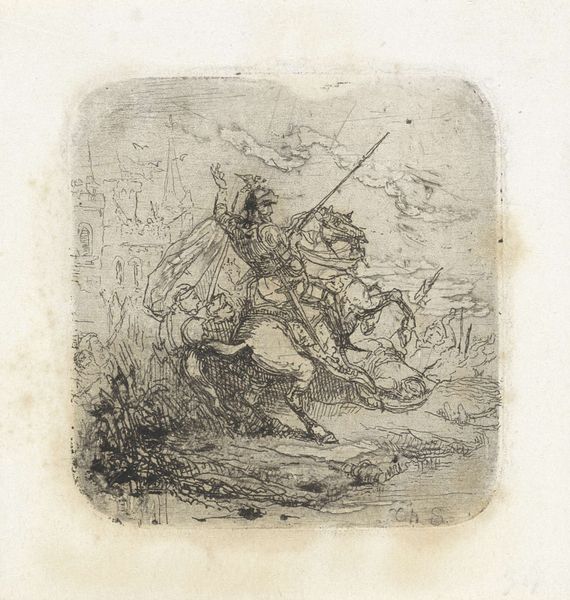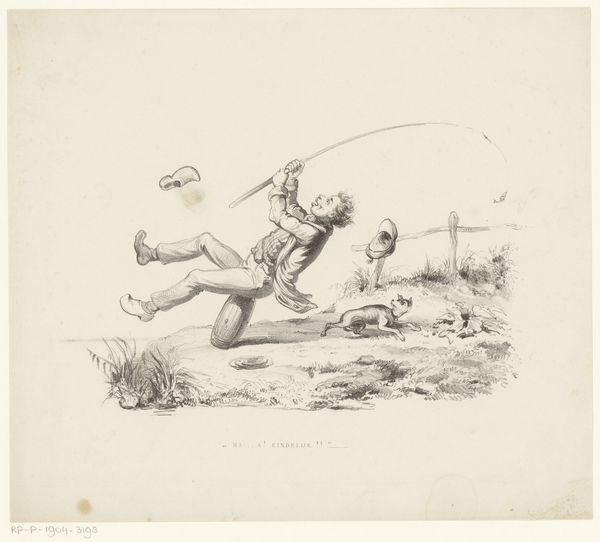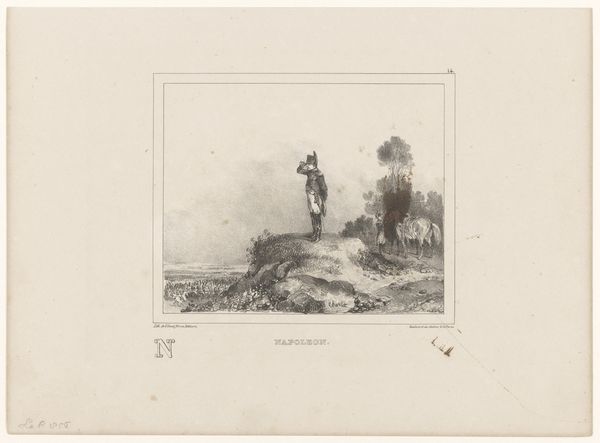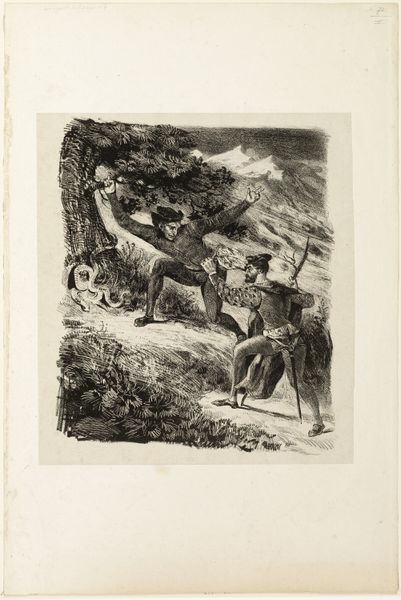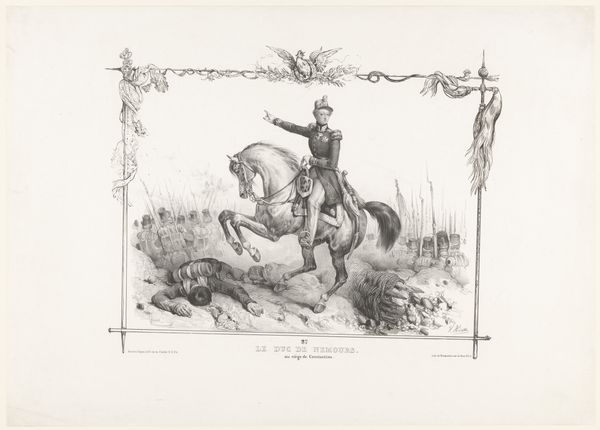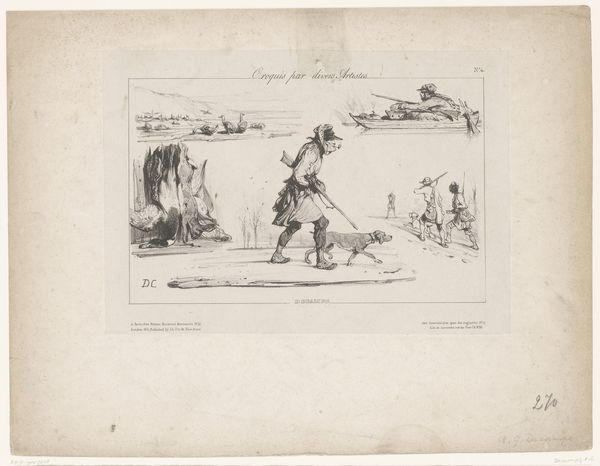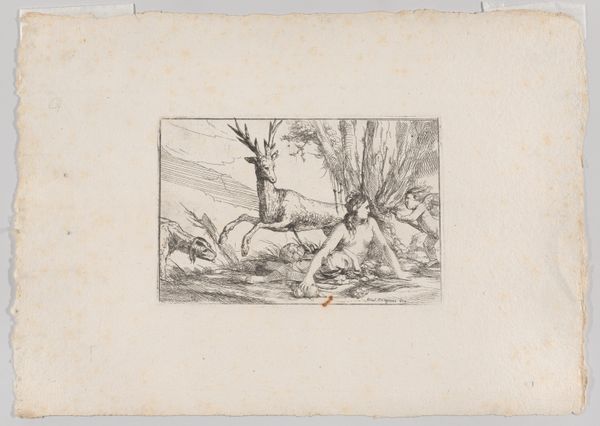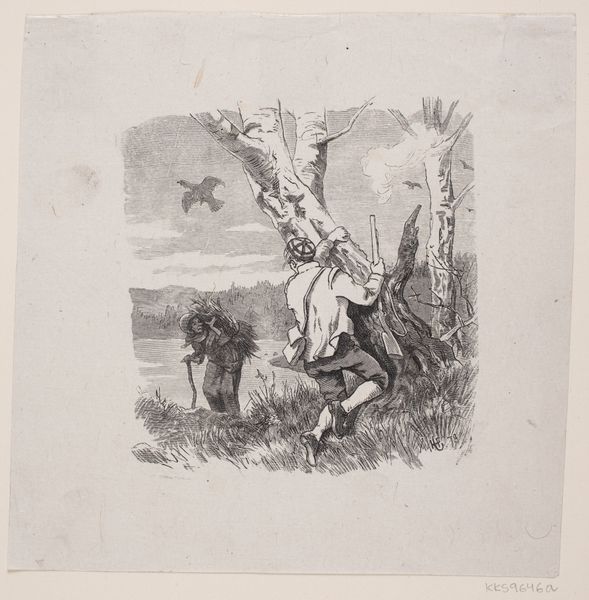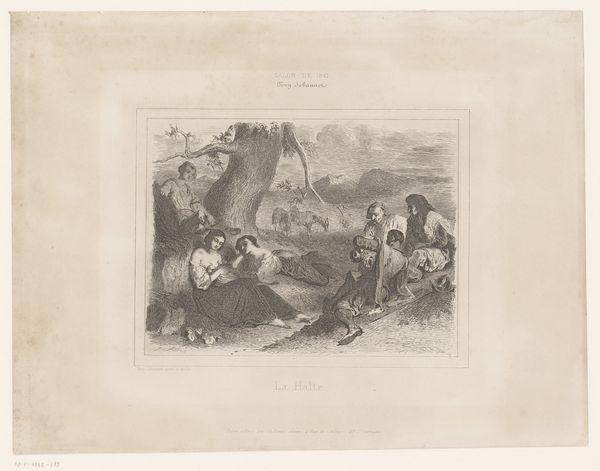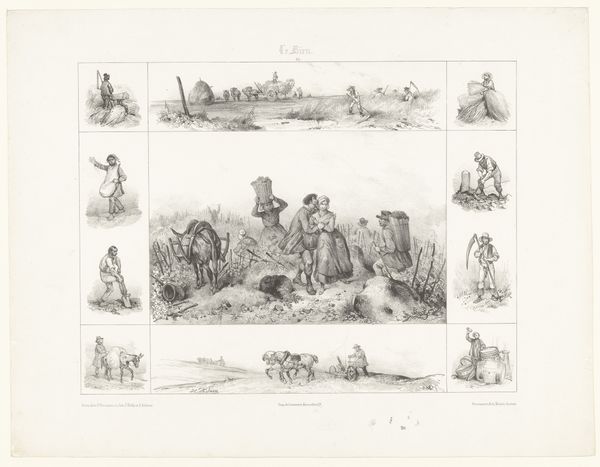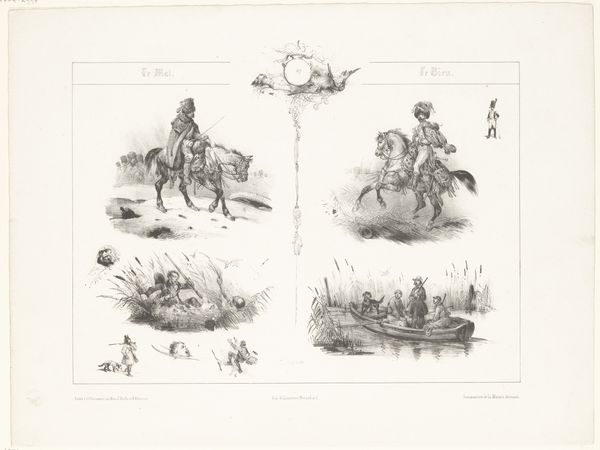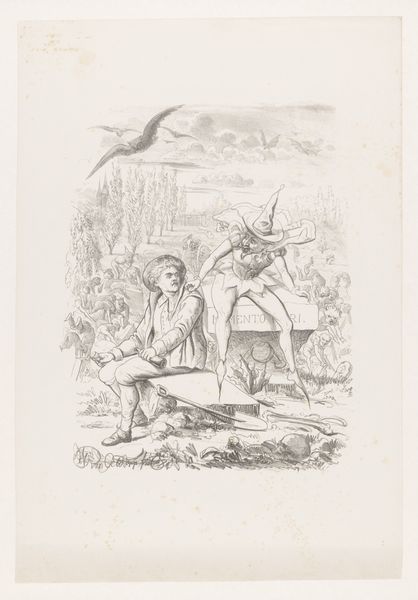
drawing, print, etching, paper, ink
#
drawing
#
comic strip sketch
#
imaginative character sketch
#
mechanical pen drawing
# print
#
etching
#
landscape
#
figuration
#
paper
#
personal sketchbook
#
ink
#
sketchwork
#
ink drawing experimentation
#
romanticism
#
pen-ink sketch
#
sketchbook drawing
#
genre-painting
#
storyboard and sketchbook work
#
sketchbook art
Dimensions: height 380 mm, width 464 mm
Copyright: Rijks Museum: Open Domain
Editor: This is "Jachtpaard met ruiter in galop" by Victor Adam, made sometime between 1838 and 1846. It's a print made with etching and ink on paper. I’m immediately struck by how it uses smaller scenes around the central image to tell a larger story. How do you interpret the narrative elements in this print, particularly concerning its relationship to 19th-century societal values? Curator: The border elements you point out function as a frame narrative, displaying aspects of the hunt and its spoils. Adam is really presenting us with an idealized vision of rural aristocracy and the pleasures they pursue. This etching, and prints like it, played a significant role in shaping and reinforcing social hierarchies, wouldn’t you say? Consider the market for such images and the values they uphold. Editor: Absolutely, the detailed rendering of the hunter's attire and the hunted animals feels very deliberate. Do you think the idyllic setting might be romanticizing the realities of the hunt and land ownership? Curator: I think that’s spot on. The Romantic movement greatly influenced depictions of nature and rural life, often glossing over the less appealing aspects. This print could also be considered within the framework of how art was utilized as a tool to project power and control during this period. The hunt, after all, was more than just sport; it was a symbol of dominion. The relatively clean nature of it suggests a degree of remove from the actual act of labor involved in managing the hunt. How do you see that relationship expressed formally, through his rendering style? Editor: I see what you mean, the crisp lines and meticulous details create an aesthetic distance, almost like staging a scene. This was really informative, especially in seeing how the image is deeply embedded in its socio-political context. Curator: Precisely, by examining the image through this lens, we get to appreciate how deeply art is connected to societal structures and power dynamics.
Comments
No comments
Be the first to comment and join the conversation on the ultimate creative platform.

